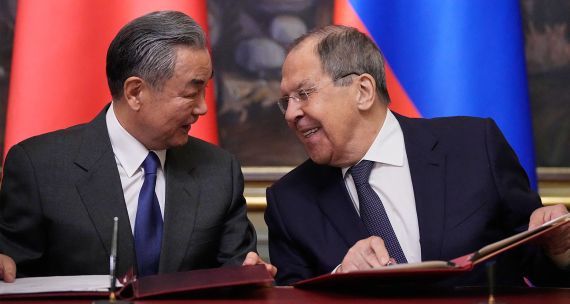The Takeaway
The 16th annual BRICS Summit, held from October 22–24, 2024, in the Russian city of Kazan, highlighted the bloc's growing geopolitical and economic influence, with its members now accounting for 45 per cent of the world’s population and 28 per cent of global GDP.
India, China, and Russia — three of the bloc’s four founding members — emerged from the summit with notable diplomatic gains: Russia, as host, demonstrated it was not isolated on the global stage, and India and China reached a key agreement just before the summit began to ease tensions at their shared border, which was the site of violent clashes in 2020.
However, differences among member states remain a significant obstacle to achieving some of the bloc’s key goals, such as establishing an alternative international payments system to challenge the dominance of the U.S. dollar.
In Brief
- BRICS — an acronym for Brazil, Russia, India, China, and South Africa — was established in 2010 to reform the Western-dominated global governance system and deepen economic collaboration among its members. At the October summit, four new members — Egypt, Ethiopia, Iran, and the UAE — were added to the roster, along with 13 ‘partner countries,’ including four from the Indo-Pacific: Indonesia, Malaysia, Thailand, and Vietnam.
- At the summit, participants issued loud calls for 'de-dollarization,' including plans to advance an alternate cross-border payment system that bypasses SWIFT, the messaging network banks use to exchange international payment instructions. With 10 Russian banks blocked from SWIFT, using local currencies to trade within BRICS nations and reduce dependence on the U.S. dollar is particularly crucial for Russia, which has been hit by Western sanctions since its full-scale invasion of Ukraine in 2022.
Implications
A commitment by BRICS to an alternative international payments system is growing, but it faces challenges. In making the case for de-dollarization, Russian President Vladimir Putin opened the summit by condemning what he viewed as the U.S. dollar's use as a geopolitical weapon and advocated for an alternative payment system to circumvent sanctions. The summit’s joint declaration highlighted goals to strengthen financial co-operation and promote local currency trade, including plans to expand an international payment system that could be an alternative to SWIFT.
However, while some BRICS member countries already trade in local currencies — including Russia and China, as well as India and the UAE — and favour greater financial sovereignty, not all members agree entirely on the push for de-dollarization. While China and Russia are eager to reduce reliance on the U.S. dollar, India and Brazil are more cautious, favouring gradual shifts that preserve existing trade relationships with the West. This divergence suggests that, while BRICS may promote alternatives, de-dollarization is unlikely to advance on any significant scale in the immediate future. Furthermore, the U.S. dollar continues to dominate the global financial landscape, with 80 per cent of global trade settled in American dollars and nearly 60 per cent of central bank reserves held in this currency.
India and China are starting to mend fences — partly. Indian Prime Minister Narendra Modi and Chinese President Xi Jinping formally met for the first time in five years on the sidelines of the summit, following a deep freeze in India-China relations over violent clashes in 2020 along the Himalayan border region of Ladakh. The clashes led to the deaths of at least 20 Indian soldiers and four Chinese soldiers. There was rising speculation about a thaw in relations after Indian Foreign Secretary Vikram Misri’s October 21 announcement that the two sides had reached an agreement to resume patrolling operations, which were curtailed in 2020.
It remains unclear whether the pre-2020 status quo ante has been fully restored. There were concerns in India that Chinese troops may have breached the de facto border — known as the Line of Actual Control (LAC) — in 2020 and occupied territory on the Indian side of the LAC. Furthermore, while the recent border agreement may ease tensions between Indian and Chinese troops in the Ladakh region, Beijing and New Delhi appear far from fully settling their 4,000-kilometre-long border, which remains largely disputed. Both countries also continue to jockey for influence in nearby Bangladesh, Nepal, and Sri Lanka.
What’s Next
1. BRICS as a leading voice for Global South
The rise of BRICS as a champion of developing nations and their concerns was underscored by the summit’s discussions, which focused on greater co-operation among members of the Global South on key issues such as food security, energy, and infrastructure. The discussions also spotlighted the enhanced role of the New Development Bank — the BRICS’ multilateral development bank — in financing development in the Global South and establishing itself as a viable alternative to Western-dominated Bretton Woods institutions. The Kazan Declaration, issued at the close of the BRICS Summit, also advocated for reforms of key multilateral institutions such as the UN Security Council.
2. Lack of cohesion
In contrast to Russia and China, Brazil and India remain cautious about the bloc adopting an overtly anti-Western stance, favouring instead pushing for reform within existing institutions over direct confrontation with the U.S.-led order. India’s current ties with the U.S., in fact, appear stronger than ever. Meanwhile, although tensions between India and China — by far the two largest BRICS members — have eased somewhat along their disputed border, the two countries are still locked in a deepening regional rivalry.
Moreover, while the bloc is growing in number, its expansion risks fragmentation, as differing interests in global trade and geopolitics will make it increasingly challenging to maintain a unified agenda.
• Edited by Erin Williams, Senior Program Manager, Vina Nadjibulla, Vice-President Research & Strategy, Ted Fraser, Senior Editor, APF Canada







